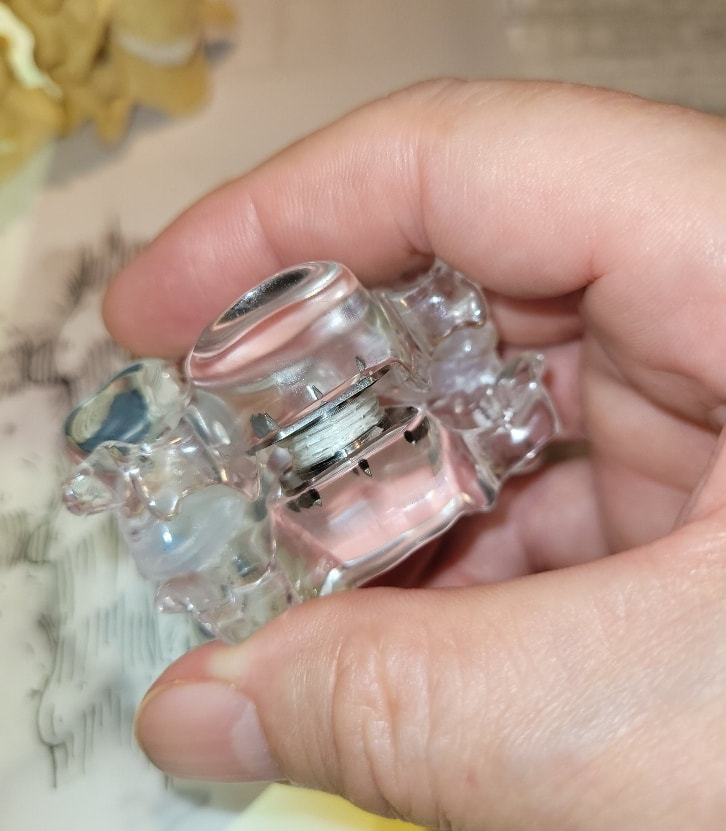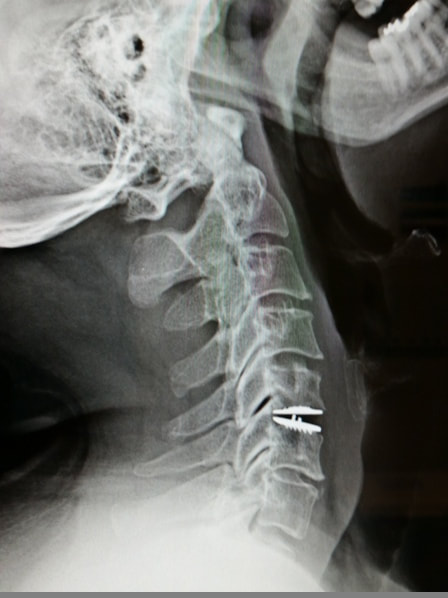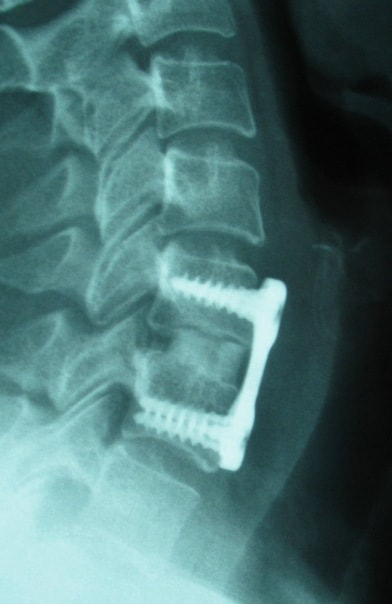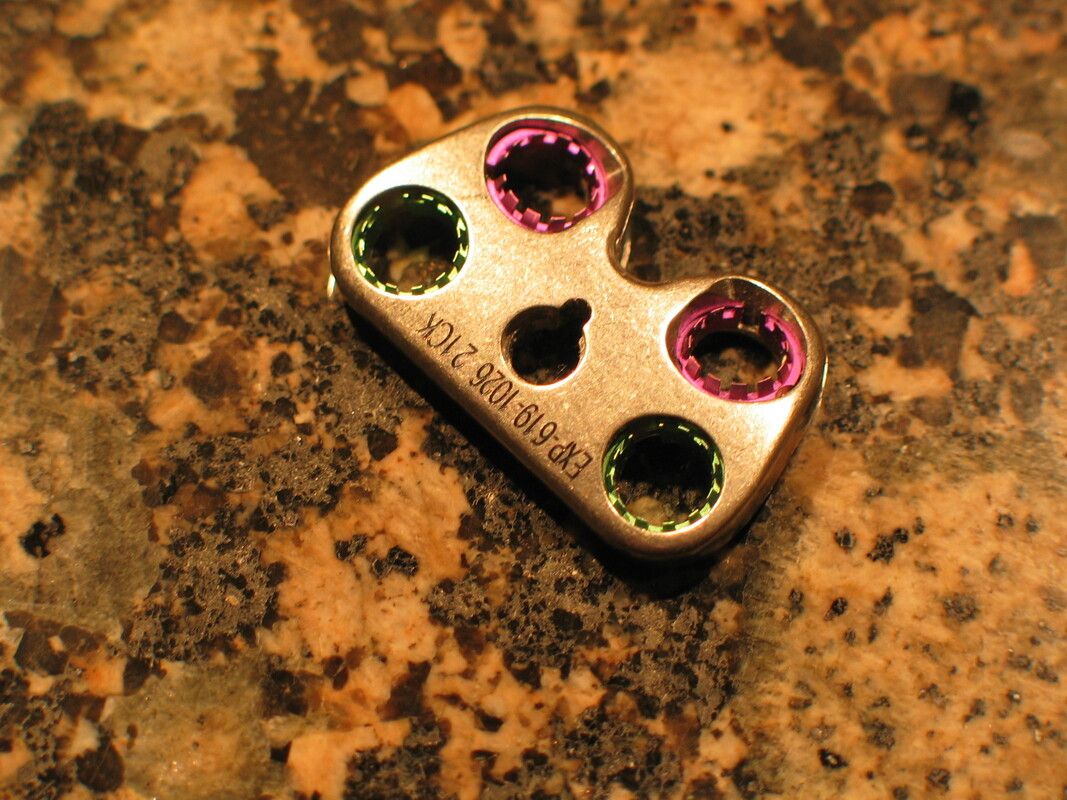Post-operative Instructions: Part 1: Cervical Spine Patients
What to do after Cervical Spine Surgery
My office often gets calls from patients who've just gone home from the OR, wondering what they should do to take care of their wound and what their restrictions are in the first weeks after the operation.
Usually these are questions that were addressed at one point or another before or after the operation, but there's a lot to digest so some of the finer points can be easily forgotten. More often, my patients remember what I told them, but get conflicting instructions from someone else - the recovery room nurse, the scheduler, a family member or next door neighbor! - who tells them firmly "Oh No No No - you can't do THAT, you have to do THIS" and gets them confused and upset.
The MOST COMMON source of confusion is advice or instruction, provided by a nurse or health care provider, that's intended for a patient who had a completely different kind of surgery. And, when it comes to cervical spine surgery the confusion is usually between Cervical fusion and Cervical disc replacement.
First of all, each of my patients should get a PRINTED handout with the most simple instructions, given at the time of discharge, specific to their treatment and my recommendations. If you aren't offered this, ask for it, it's available.
Second, follow the instructions I provide you which are specific to your condition and your kind of surgery -
The MOST COMMON source of confusion is advice or instruction, provided by a nurse or health care provider, that's intended for a patient who had a completely different kind of surgery. And, when it comes to cervical spine surgery the confusion is usually between Cervical fusion and Cervical disc replacement.
First of all, each of my patients should get a PRINTED handout with the most simple instructions, given at the time of discharge, specific to their treatment and my recommendations. If you aren't offered this, ask for it, it's available.
Second, follow the instructions I provide you which are specific to your condition and your kind of surgery -
So here's what you need to know:
Wound Care After Neck Surgery - For All Patients:
The sterile dressing applied in the Operating Room needs to be left in place for three to four days. If there is a little blood on the dressing do not worry about it, but if the dressing becomes soaked or loose, it can be peeled away with clean hands and a new gauze pad placed over the surface dressing. Tape this back in place and keep it clean.
Do not get the dressing wet. You may shower after three days, but cover the dressing with saran and tape and avoid directly soaking it. DO NOT take a tub bath or submerge the wound in water until fully healed and sealed - 10 - 12 days.
After 3-4 days, you may remove the outer dressing and cover the inner dressing with gauze for comfort or leave open to air.
If you find a piece of suture protruding from the skin don't fiddle with it. The surgical closure for my wounds is a plastic surgery closure and the stitches are absorbable. The small knot tied on the skin will blow away after the stitches have resorbed.
If the wound is sore, you may place a bit of ice in a bag (a bag of frozen peas works great) for a bit to reduce swelling and pain. Do not put ice directly on your skin.
At ten to twelve days the wound should be completely sealed and you can peel away or wash away any remaining dressing over the wound, or you can leave it to peel away on its own.
Slight bleeding from the wound may persist for 3 -5 days after surgery, but should then stop. Continued drainage, drainage that starts up again after the wound appeared to seal, or swelling redness, or increasing pain at the incision site are all things I want to hear about, so please call the office early in the day before things become severe, or go to your emergency room for an examination.
Wound Care After Neck Surgery - For All Patients:
The sterile dressing applied in the Operating Room needs to be left in place for three to four days. If there is a little blood on the dressing do not worry about it, but if the dressing becomes soaked or loose, it can be peeled away with clean hands and a new gauze pad placed over the surface dressing. Tape this back in place and keep it clean.
Do not get the dressing wet. You may shower after three days, but cover the dressing with saran and tape and avoid directly soaking it. DO NOT take a tub bath or submerge the wound in water until fully healed and sealed - 10 - 12 days.
After 3-4 days, you may remove the outer dressing and cover the inner dressing with gauze for comfort or leave open to air.
If you find a piece of suture protruding from the skin don't fiddle with it. The surgical closure for my wounds is a plastic surgery closure and the stitches are absorbable. The small knot tied on the skin will blow away after the stitches have resorbed.
If the wound is sore, you may place a bit of ice in a bag (a bag of frozen peas works great) for a bit to reduce swelling and pain. Do not put ice directly on your skin.
At ten to twelve days the wound should be completely sealed and you can peel away or wash away any remaining dressing over the wound, or you can leave it to peel away on its own.
Slight bleeding from the wound may persist for 3 -5 days after surgery, but should then stop. Continued drainage, drainage that starts up again after the wound appeared to seal, or swelling redness, or increasing pain at the incision site are all things I want to hear about, so please call the office early in the day before things become severe, or go to your emergency room for an examination.
For Cervical Total Disc Arthroplasty Patients:
If you've had a Cervical Disc Replacement, (remember, this operation is also call a cervical disc arthroplasty or artificial disc) follow these instructions.
Care and activity after a cervical disc replacement is VERY DIFFERENT from care after a cervical fusion (ACDF)! I discuss these four points with every single patient I operate on.
Healthcare providers (nurses/doctors/PT's/family members) make the following mistakes constantly:
Post-Operative Care for Cervical Total Disc Arthroplasty Patients:
The first one to two weeks after any surgery are dedicated to getting over the incisional pain. Patients should limit range of motion and activity a little bit to avoid aggravating the healing wound and causing pain at the surgical site. Standing, walking, and careful bending will not cause any injury or damage, but over-activity may aggravate incisional pain. If that happens, the patient should back off, rest a bit, and ice the site before they get going again.
Cervical Collar: A collar is provided after cervical disc replacement to wear while the incision is healing, but only for the first 5-7 days. It is not used at night, when eating, or during normal daily activities – gentle frequent motion is desirable. And after 5-7 days, take it off and put it in the closet!
Activities:
After discharge from the hospital - right from the start:
Every day, get up and walk three to four times every day– Walk briskly, fifteen to thirty minutes without stopping to sit down – indoors or out, as tolerated. Bend carefully, but bend to put on your own slippers or shoes. Limit lifting, but feel safe lifting and carrying 5 – 10lbs as needed.
After 7 - 10 days:
Increase daily walking, and start back to regular exercise on treadmill or exercise bike. Start gentle range of motion exercise – flexion/extension, side bending, right and left rotation – within the range of pain-free motion.
Increase normal bending and twisting during light activities at home.
When neck motion is comfortable and head can turn to look over each shoulder patient may start driving short distances. May increase lifting and carrying to 10 – 15 lbs as comfortable.
Add activities a little at a time, and don’t overdo it. With cervical surgery prolonged sitting with head in one fixed position - reading, watching TV, working at the computer – can result in stiffness and pain. Change positions every half-hour.
At three weeks:
Return to Dr. McLain’s Clinic for your post-operative x-rays and check-up. Start light daily activities without restrictions. Increase walking and exercise activities, and increase bending and lifting as tolerated for light activities in the house.
Aerobic activity as tolerated – start running if you like, increase cycling, or add a pool program.
Start gentle isometrics exercises for neck strengthening and start shoulder shrugs and shoulder rolls with 5 - 10 pounds in each hand, twice a day as tolerated.
At six weeks:
Return to Dr. McLain’s Clinic for your post-operative check-up. If all is well, we’ll start home or formal Physical Therapy for upper back and shoulder girdle strengthening, flexibility, and conditioning.
Recommended Physical Therapy Exercises After Week Four to Six for Cervical Total Disc Replacement Patients:
Daily activity, and a regular aerobic exercise program, are the keys to getting most people back to good function, and are important in all neck and back surgery patients. Time invested in a physical therapy and exercise program are never wasted.
For Cervical FUSION Patients:
If you've had a Cervical Disc Replacement, (remember, this operation is also call a cervical disc arthroplasty or artificial disc) follow these instructions.
Care and activity after a cervical disc replacement is VERY DIFFERENT from care after a cervical fusion (ACDF)! I discuss these four points with every single patient I operate on.
Healthcare providers (nurses/doctors/PT's/family members) make the following mistakes constantly:
- After surgery, fusion patients do need to avoid neck motion for several weeks, but the disc replacement patient does not need to keep their head still, and they should start gentle range of motion as soon as they are comfortable (2-3 days).
- After surgery, fusion patients do need to wear a rigid cervical collar, full time, for several weeks, but the disc replacement patient wears a soft cervical collar for only five to seven days and should then take it off and put it away.
- After surgery, fusion patients need to avoid anti-inflammatory medications (NSAIDs) for eight to twelve weeks, but the disc replacement patient can and should take an NSAID daily, and they should start using NSAIDs (Advil, Aleve, Ibuprofen, Naprosyn, etc) to treat neck and muscular pain after the first week following surgery.
- And finally - if fusion patients overdo it after surgery or don't follow instructions they can harm themselves, seriously affect their result, and end up needing more surgery. If disc replacement patients overdo it, get active too soon, or don't follow advice, they may make themselves really sore, but they won't harm themselves or damage the implant, and they will just need to back off, use ice and NSAIDs, and limit activity until they are comfortable again.
Post-Operative Care for Cervical Total Disc Arthroplasty Patients:
The first one to two weeks after any surgery are dedicated to getting over the incisional pain. Patients should limit range of motion and activity a little bit to avoid aggravating the healing wound and causing pain at the surgical site. Standing, walking, and careful bending will not cause any injury or damage, but over-activity may aggravate incisional pain. If that happens, the patient should back off, rest a bit, and ice the site before they get going again.
Cervical Collar: A collar is provided after cervical disc replacement to wear while the incision is healing, but only for the first 5-7 days. It is not used at night, when eating, or during normal daily activities – gentle frequent motion is desirable. And after 5-7 days, take it off and put it in the closet!
Activities:
After discharge from the hospital - right from the start:
Every day, get up and walk three to four times every day– Walk briskly, fifteen to thirty minutes without stopping to sit down – indoors or out, as tolerated. Bend carefully, but bend to put on your own slippers or shoes. Limit lifting, but feel safe lifting and carrying 5 – 10lbs as needed.
After 7 - 10 days:
Increase daily walking, and start back to regular exercise on treadmill or exercise bike. Start gentle range of motion exercise – flexion/extension, side bending, right and left rotation – within the range of pain-free motion.
Increase normal bending and twisting during light activities at home.
When neck motion is comfortable and head can turn to look over each shoulder patient may start driving short distances. May increase lifting and carrying to 10 – 15 lbs as comfortable.
Add activities a little at a time, and don’t overdo it. With cervical surgery prolonged sitting with head in one fixed position - reading, watching TV, working at the computer – can result in stiffness and pain. Change positions every half-hour.
At three weeks:
Return to Dr. McLain’s Clinic for your post-operative x-rays and check-up. Start light daily activities without restrictions. Increase walking and exercise activities, and increase bending and lifting as tolerated for light activities in the house.
Aerobic activity as tolerated – start running if you like, increase cycling, or add a pool program.
Start gentle isometrics exercises for neck strengthening and start shoulder shrugs and shoulder rolls with 5 - 10 pounds in each hand, twice a day as tolerated.
At six weeks:
Return to Dr. McLain’s Clinic for your post-operative check-up. If all is well, we’ll start home or formal Physical Therapy for upper back and shoulder girdle strengthening, flexibility, and conditioning.
Recommended Physical Therapy Exercises After Week Four to Six for Cervical Total Disc Replacement Patients:
Daily activity, and a regular aerobic exercise program, are the keys to getting most people back to good function, and are important in all neck and back surgery patients. Time invested in a physical therapy and exercise program are never wasted.
For Cervical FUSION Patients:
If you've had a Cervical Fusion, (most often an Anterior Cervical Discectomy and Fusion or ACDF) follow these instructions.
Healthcare providers (nurses/doctors/PT's/family members) usually know more about fusion than disc replacement and ar usually going to give you the following instructions correctly:
Healthcare providers (nurses/doctors/PT's/family members) usually know more about fusion than disc replacement and ar usually going to give you the following instructions correctly:
- After surgery, fusion patients do need to avoid neck motion for several weeks, and cannot start neck range of motion until the fusion has had a chance to get started (4-6 weeks).
- After surgery, fusion patients do need to wear a rigid cervical collar, full time, for several weeks, and should take it off only to shave or bathe, and later when they eat.
- After surgery, fusion patients need to avoid anti-inflammatory medications (NSAIDs) for eight to twelve weeks, as these medications (Advil, Aleve, Ibuprofen, Naprosyn, etc) can interfere with the fusion.
- And finally - if fusion patients overdo it after surgery or don't follow instructions they can harm themselves, seriously affect their result, and end up needing more surgery. Pushing forward too fast, cheating on brace-wear or restrictions, or cigarette smoking can lead to a non-union or even cause the fixation implants, such as cervical fixation plates, to loosen or break. That would mean more surgery.
Post-Operative Care for Cervical Fusion (ACDF) Patients:
The first one-two weeks after any surgery are dedicated to getting over the incisional pain. Patients should limit activity to avoid aggravating the healing wound and causing pain at the surgical site, and to avoid stressing the fusion before it has had a chance to get started. Standing, walking, and careful bending will not cause any injury or damage, but over-activity may aggravate incisional pain or initiate a surgical failure. You can safely bend to put your socks and shoes on, but avoid repetitive bending, lifting, and all twisting.
Cervical Collar:
A hard or soft collar is provided after cervical fusion depending on the type of instrumentation used and your bone quality. During the first 3 weeks this brace is to be worn full time, including at night, when eating, or during normal daily activities – and any motion of the head and neck should be avoided when the collar is taken on or off. And after 3 -6 weeks, we will start weaning you out of the brace, but you should never take it off and put it away just because you "Feel ok"!
Activities:
After discharge from the hospital - right from the start:
Every day, get up and walk three to four times every day– Walk briskly, fifteen to thirty minutes without stopping to sit down – indoors or out, as tolerated. Bend carefully, but bend to put on your own slippers or shoes. Limit lifting, but feel safe lifting and carrying 5 – 10lbs as needed.
After 7 - 10 days:
Increase daily walking, and start back to light exercise on treadmill or exercise bike. Start gentle shoulder range of motion exercise – shoulder shrugs – within the range of pain-free motion. Do not start trying neck exercises or neck range of motion exercises yet.
Increase normal bending and twisting of the lower back during light activities at home.
At three weeks:
Return to Dr. McLain’s Clinic for your post-operative x-rays and check-up. Start light daily activities with restrictions. Increase walking and exercise activities, and increase bending and lifting as tolerated for light activities in the house. Continue wearing your collar as instructed.
Aerobic activity as tolerated – may start treadmill or elliptical exercise if you like, increase stationary cycling, but do not try to add a pool program that involves swimming until out of the collar and limber.
At six weeks:
Return to Dr. McLain’s Clinic for your post-operative check-up and more x-rays. If all is well, we’ll start weaning you out of the collar and plan a formal Physical Therapy Program for upper back and shoulder girdle strengthening, flexibility, and conditioning.
Recommended Physical Therapy Exercises After Week Eight to Ten for Cervical Fusion Patients:
Daily activity, and a regular aerobic exercise program, are the keys to getting most people back to good function, whether they've had a disc replacement, a cervical fusion, or a posterior cervical operation.
The first one-two weeks after any surgery are dedicated to getting over the incisional pain. Patients should limit activity to avoid aggravating the healing wound and causing pain at the surgical site, and to avoid stressing the fusion before it has had a chance to get started. Standing, walking, and careful bending will not cause any injury or damage, but over-activity may aggravate incisional pain or initiate a surgical failure. You can safely bend to put your socks and shoes on, but avoid repetitive bending, lifting, and all twisting.
Cervical Collar:
A hard or soft collar is provided after cervical fusion depending on the type of instrumentation used and your bone quality. During the first 3 weeks this brace is to be worn full time, including at night, when eating, or during normal daily activities – and any motion of the head and neck should be avoided when the collar is taken on or off. And after 3 -6 weeks, we will start weaning you out of the brace, but you should never take it off and put it away just because you "Feel ok"!
Activities:
After discharge from the hospital - right from the start:
Every day, get up and walk three to four times every day– Walk briskly, fifteen to thirty minutes without stopping to sit down – indoors or out, as tolerated. Bend carefully, but bend to put on your own slippers or shoes. Limit lifting, but feel safe lifting and carrying 5 – 10lbs as needed.
After 7 - 10 days:
Increase daily walking, and start back to light exercise on treadmill or exercise bike. Start gentle shoulder range of motion exercise – shoulder shrugs – within the range of pain-free motion. Do not start trying neck exercises or neck range of motion exercises yet.
Increase normal bending and twisting of the lower back during light activities at home.
At three weeks:
Return to Dr. McLain’s Clinic for your post-operative x-rays and check-up. Start light daily activities with restrictions. Increase walking and exercise activities, and increase bending and lifting as tolerated for light activities in the house. Continue wearing your collar as instructed.
Aerobic activity as tolerated – may start treadmill or elliptical exercise if you like, increase stationary cycling, but do not try to add a pool program that involves swimming until out of the collar and limber.
At six weeks:
Return to Dr. McLain’s Clinic for your post-operative check-up and more x-rays. If all is well, we’ll start weaning you out of the collar and plan a formal Physical Therapy Program for upper back and shoulder girdle strengthening, flexibility, and conditioning.
Recommended Physical Therapy Exercises After Week Eight to Ten for Cervical Fusion Patients:
Daily activity, and a regular aerobic exercise program, are the keys to getting most people back to good function, whether they've had a disc replacement, a cervical fusion, or a posterior cervical operation.




